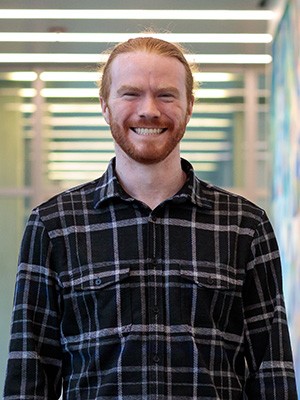Quantum computers have the potential to solve complex problems at currently unattainable speeds. Their output could supercharge scientific research, advance artificial intelligence, and create unhackable communications.
Yet, superposition and entanglement—the concepts that serve as the foundation of quantum computing—are some of the most fragile states in nature. Proving the viability of quantum technology is top of mind for Noah Glachman, a student in the Quantum Science and Engineering PhD program at the University of Chicago's Pritzker School of Molecular Engineering (PME).
"Quantum computing has the potential to solve some of the world's biggest problems. I'm proud to be a part of a team at UChicago's Pritzker School of Molecular Engineering making that happen," Glachman said.
Getting quantum computers to communicate

Glachman's research focuses on quantum networking, specifically how quantum computers can send information to each other over existing fiber optic cables.
"The odds of losing a signal beyond 10 kilometers is quite high," Glachman said. "When, or if, this technology takes off, these machines will need to talk to each other."
Fiber optic cables operate in a narrow range of colors of light. Quantum systems, however, operate on a broader spectrum. To address this problem, Glachman uses optical tweezer arrays, a technique that Glachman's advisor, Assistant Professor Hannes Bernien, helped advance. For his efforts, Bernien was a co-recipient of the 2023 New Horizons in Physics Prize.
Optical tweezer arrays shine powerful lasers on quick-moving atoms that enable researchers to pause and control their movements. These relative moments of stillness allow Glachman to manipulate their wavelengths and create stronger connections between atoms and particles, known as entanglement.
Soon, Glachman will test his idea using fiber optic cables that run from Bernien's lab to Argonne National Laboratory and the lab of PME Assistant Professor Tian Zhong.